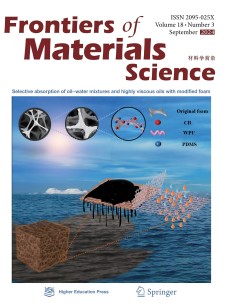Mesoporous molecular sieve confined phase change materials with high absorption, enhanced thermal conductivity, and cooling energy charging/discharging capacity
Abstract
The biggest challenge for organic phase change materials (PCMs) used in cold energy storage is to maintain high heat storage capacity while reducing the leakage risk of PCMs during the phase transition process. This is crucial for expanding their applications in the more demanding cold storage field. In this study, novel form-stable low-temperature composite PCMs are prepared with mesoporous materials, namely SBA-15 and CMK-3 (which are prepared using the template method), as supporting matrices and dodecane as the PCM. Owing to the combined effects of capillary forces within mesoporous materials and interactions among dodecane molecules, both dodecane/SBA-15 and dodecane/CMK-3 exhibit outstanding shape stability and thermal cycling stability even after 200 heating/cooling cycles. In comparison to those of dodecane/SBA-15, dodecane/CMK-3 exhibits superior cold storage performance and higher thermal conductivity. Specifically, the phase transition temperature of dodecane/CMK-3 is −8.81 °C with a latent heat of 122.4 J·g−1. Additionally, it has a thermal conductivity of 1.21 W·m−1·K−1, which is 9.45 times that of dodecane alone. All these highlight its significant potential for applications in the area of cold energy storage.

 求助内容:
求助内容: 应助结果提醒方式:
应助结果提醒方式:


